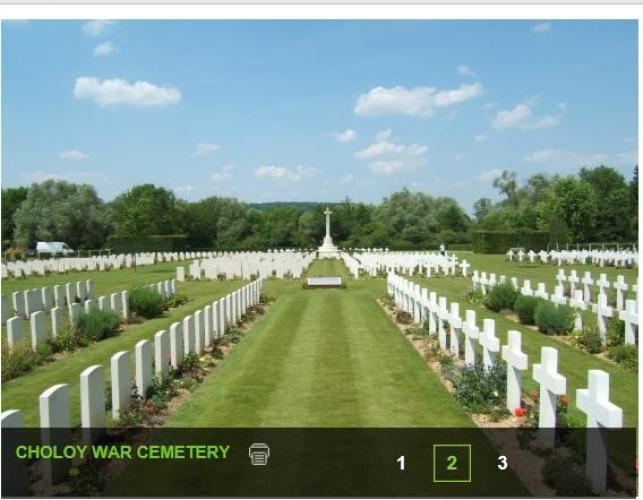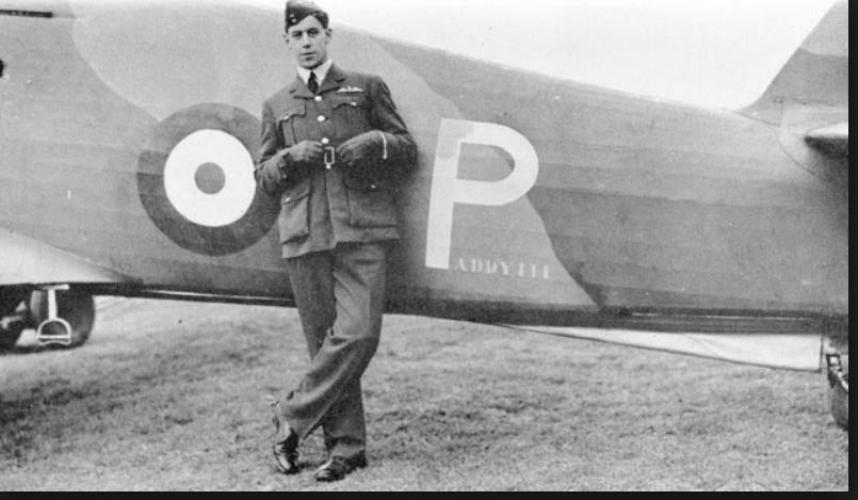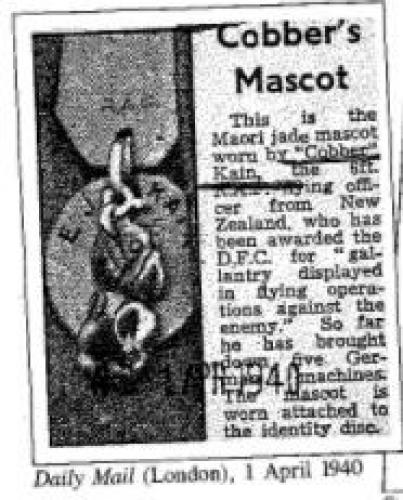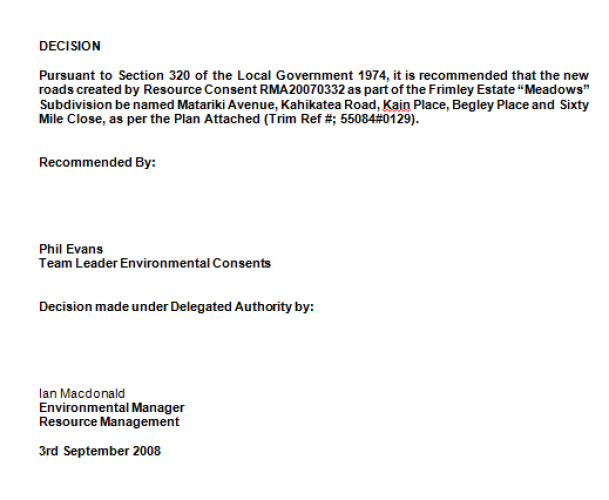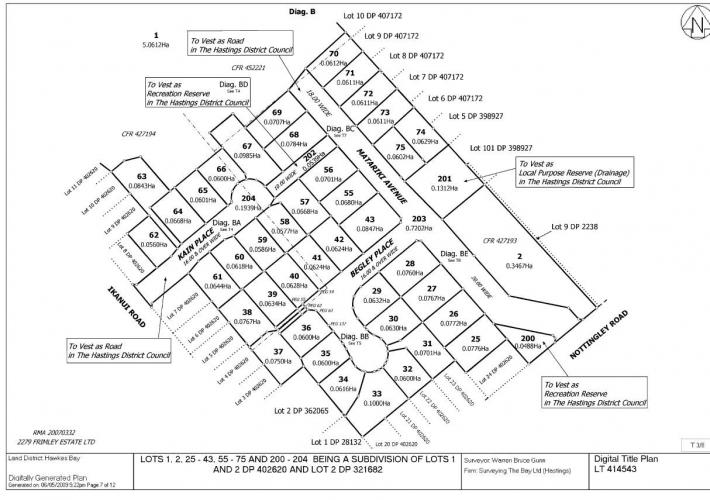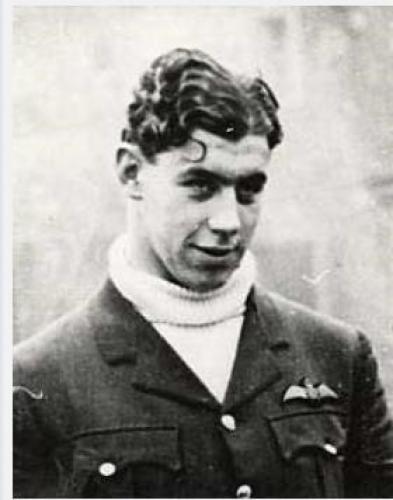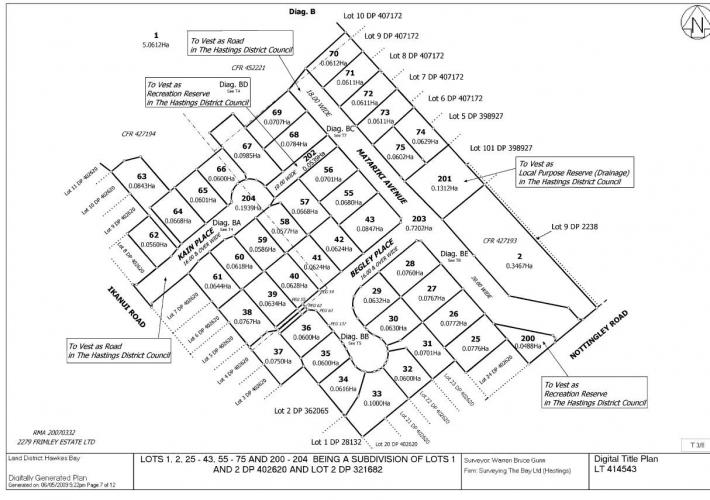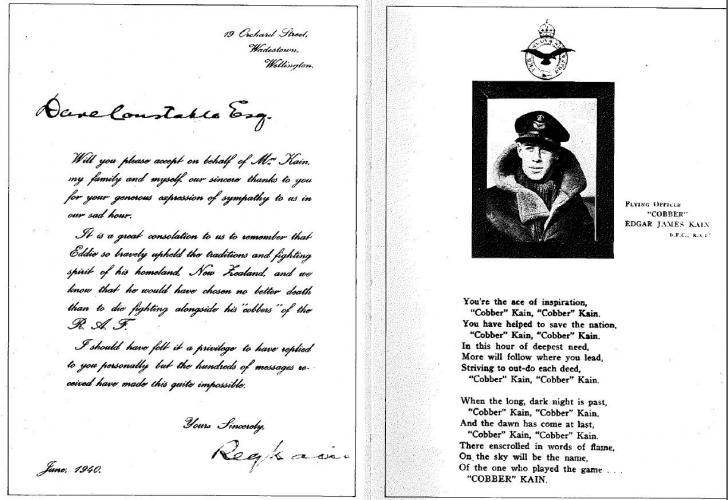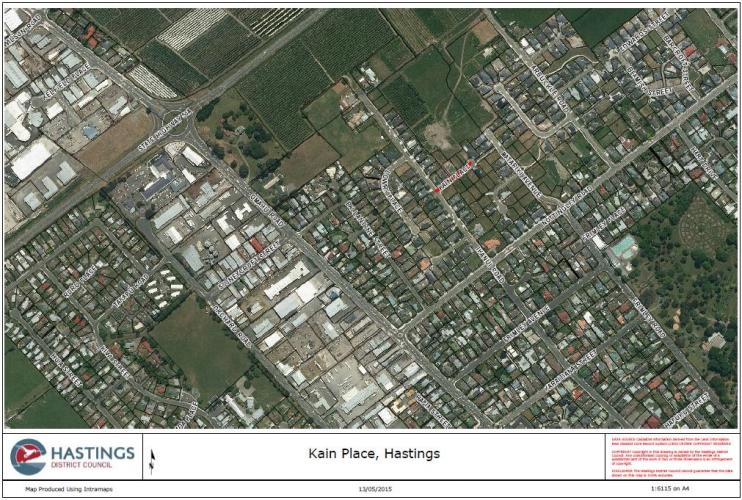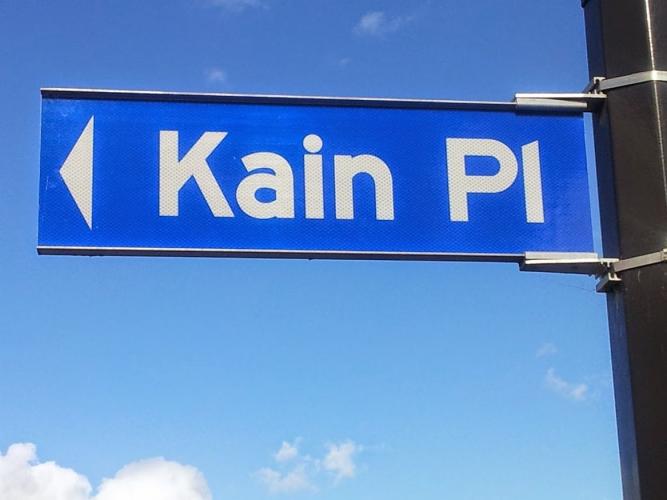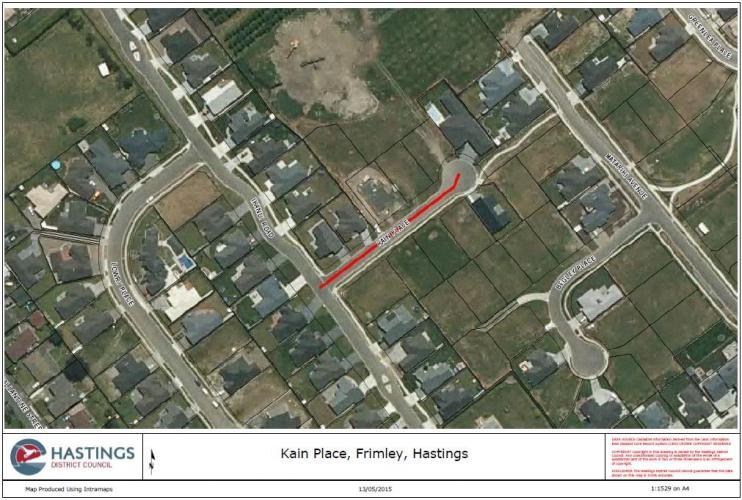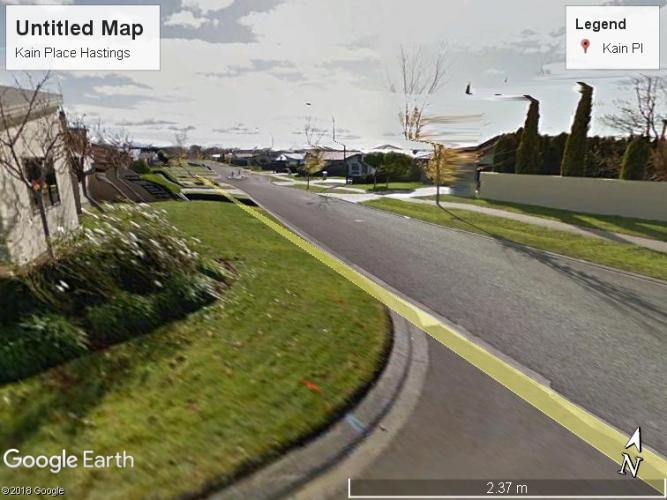030 Kain Place Hastings, Street View Kain Place
Reason for the name
Kain Place was named to honour Flying Officer Edgar “Cobber” Kain, WWII pilot and fighter ace born in Hastings. It was suggested by a member of the public and supported by Councillors Wilson and Burnside.
Edgar was a larger than life character obtaining legendary status in the early stage of the war, standing over 6 feet tall and weighing 180lbs a friend described him as a daredevil pilot although on the ground he was shy and modest. He loved the Hurricane fighters and threw the aeroplane around as if it were a toy.
By early June 1940 he had up to 17 confirmed downed German Aircraft (his flying mates claimed he had brought down 20-40, but lacking the necessary proof some could not be assigned to his official "bag"). He was to be rested from operations and to fly back to England.
Authors: Helen Gelletly and Cherie Flintoff, Hastings District Council
Flying Officer Edgar (Cobber) James Kain, Royal Air Force 73 Squadron service number 39534
Edgar was born in Hastings New Zealand on 27 June 1918 to parents Nellie Maria Kain (formerly Keen, from prior marriage by which she had one child) and George William Reginald (Reggie) Kain, who married in 1912. According to 1914 electoral records his family resided at 504 Nelson Street North, Hastings, and his father was working as a commercial traveller (travelling salesman) and later a warehouse man.
Eddie (as he was known to his family) had two older brothers Maurice and Kenneth and sisters Peggy, Mabel and Judith.
In 1919 when Edgar was 10 months old the family returned to England aboard the Athenic for a holiday and they returned to the port of Napier in January 1920.
The family moved to Wellington a short time later and George Kain (Reggie) operated an importing business. He also operated from premises in Christchurch. The business did well assuring Eddie of a good education and a comfortable childhood. Edgar attended Croydon Preparatory school in Eastbourne Wellington as a boarder; he started secondary school as a boarder at Christ’s College Christchurch. After 3 years of secondary school Eddie left Christ’s College at the end of 1935.
He began flying lessons at Rongatai Aerodrome Wellington, while in Wellington he was employed in his father’s business as a clerk. In 1936 he transferred from the Wellington Aero Club to the Canterbury Aero Club based at Wigram to complete his training. After 5.40 hours solo flying he gained his A License.
At the time the British RAF had been advertising for applicants for their Short Service Commission. Applicants had to make their own way to London and there was no guarantee of acceptance, Eddie travelled to London with his family and towards the end of 1936 applied to join the RAF. Once accepted he was posted to a civilian flying school.
Eddie’s initial training was a 10 week course at Brough, near Hull in Yorkshire. Towards the end of the course Eddie was asked to state his preference fighters or bombers, his immediate answer was fighters. When the course concluded in March 1937 Eddie had completed over 25 hours dual and 30 hours solo flying. His training is also said to have been at Blackburn, Lincolnshire with further training at Sealand and Tern Hill.
Eddie was granted a Short Service Commission for 4 years as an Acting Pilot Officer in the general duties branch of the RAF.
Eddie continued training and enjoyed flying aerobatics whenever the opportunity presented itself. He was well known for his daily aerobatics in the French Village Echemines where the Squadron was posted before his death.
Eventually Eddie was posted to 73 Squadron based at Digby Lincolnshire. Eddie was known in the squadron as “Cobber” Apparently Eddie being constantly addressed his mates as ‘Hey Cobber” so the title was reversed on him.
Eddie flew Gladiators and then graduated to Hawker Hurricanes.
On 24 August 1939 No 73 Squadron was ordered to mobilise for war. Fighter command expected an immediate air assault on Great Britain and No 73 squadron was standing by as home defence squadron although it was also making rapid preparations to depart overseas.
He was made flying officer in 1939, and at the outbreak of the Second World War was appointed a section commander of No. 73 Hawker Hurricane Squadron. He flew on 80 fighter and escort operations over Le Havre, Louvres, Rheims, Verdun, and other parts of enemy-occupied territory, and was officially credited with the destruction of at least 12 enemy aircraft in fighter engagements. He was mentioned in dispatches in February 1940, and in March of the same year was awarded the Distinguished Flying Cross for a particularly daring exploit.
Cobber’s commanding officer in 73 Squadron was Flight Commander Dereck (Bill) Kain, a fellow New Zealander, although apparently they were no relation to each other.
By September 1939 No 73 squadron had set up base at Rouvres in France and by this time Edgar was a Section Commander. Eddie wore a greenstone / pounamu Tiki given to him by one of his sisters (possibly Judy who also went to England and joined the airforce as a WAF) and this tiki has been recorded as being his mascot. On 8 November 1939 Edgar brought down his first enemy aircraft, although Edgar was elated at the victory he was concerned as he had seen the plane come down in a nearby village. The adjutant made a telephone call and found out the plane had come down in the village of Lubey and that there had been no civilian casualties.
Edgar went on to become the first British Air Ace of the war after bringing down 5 or more enemy aircraft.
In March 1940 he was awarded the Distinguished Flying Cross. He was flying on operations when he sighted seven enemy machines above him at 5,000 ft. He immediately gave chase and while pursuing them back towards the German lines he found another enemy fighter on his tail. Attacked from behind, and with his own craft considerably damaged, he engaged the enemy plane and shot it down. With his cockpit full of smoke and oil, he contrived by the greatest skill to get his machine down behind the Allied lines. The citation for the award referred to the magnificent fighting spirit Kain displayed in outmanoeuvring his enemy and destroying him.
Only a short time later, on the 10th of April 1940, he became engaged to an English actress Joyce Phillips.
Edgar was a larger than life character obtaining legendary status in the early stage of the war, standing over 6 feet tall and weighing 180lbs a friend described him as a daredevil pilot although on the ground he was shy and modest. He loved the Hurricane fighters and threw the aeroplane around as if it were a toy.
By early June 1940 he had up to 17 confirmed downed German Aircraft (his flying mates claimed he had brought down 20-40, but lacking the necessary proof some could not be assigned to his official "bag"). He was to be rested from operations and fly back to England.
To mark his departure he flew an aerobatic display over the aerodrome at Echimenes on June 7th. He completed two low level rolls and was attempting a third when he crashed onto the airfield and was thrown out of the aircraft and killed. Not yet 22 he was buried in Troyes cemetery in France.
He had been scheduled to marry Joyce Phillips the following month. Joyce presented the colours on his behalf in July 1940 to an air cadet training squadron in Manchester.
Cobbers mum Nellie and sister Judy (later Judy Pickard) were presented to the King and received the DFC awarded to Cobber in 1940 and Cobber’s mum returned to NZ with the medal. They had been on their way to England for his wedding when they heard instead of his death.
After the war his remains were moved to the Allied section of the Choloy war cemetery in France.


